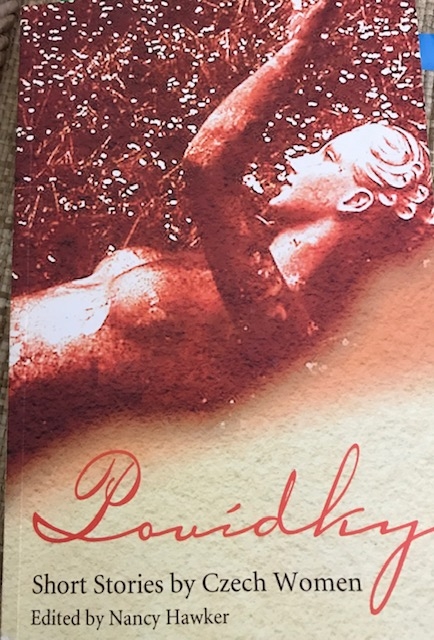Let’s “Czech” Out Some Short Stories!
Czech literary history is rife with examples of censorship, but it’s a history we can learn from. For Banned Books Week days 2 and 3, I thought I’d highlight a couple of my favorite Czech short stories.
I became interested in Czech literature quite a few years ago after seeing the film Closely Watched Trains. The film is based on a novel by Bohumil Hrabal, who is, as I understand it, a Czech literary staple. Then, I read The Engineer of Human Souls by Josef Skvorecky. (If I’m not mistaken, The Engineer of Human Souls makes a reference to Hrabal’s novel, and I was quite proud of myself for understanding the allusion.) And when I eventually read The Unbearable Lightness of Being by Milan Kundera, I wondered how it was that I had come this far in life without having read any Kundera before. (From there, I proceeded to read all of Kundera’s books in relatively rapid succession.)
However, as you may have noticed, these are all novels by men. Finding English translations of Czech women authors has been a frustratingly difficult task. (Fortunately, the lack of English translations of women authors has gained increasing attention over the last few years. I think there are improvements occurring in that area.) Thus, a couple of years ago, I was ecstatic to discover the book Povidky: Short Stories by Czech Women, edited by Nancy Hawker and published in 2006 by Telegram Books. (Povidky actually means “short stories” in Czech, so it’s an apt title for the collection.)

“Mininovel” by Alexandra Berkova
The first story in Povidky is “Mininovel” by Alexandra Berkova; it quickly became one of my all-time favorite short stories. I can read this story over and over again, and it never loses its charm.
This story captivated me in many ways, but its unique point of view is what initially drew me in. The story is told from the first-person point of view of Dita, but the reader doesn’t know this until the very last sentence of the story. Dita is relaying the story of her mother’s pregnancy (with her–Dita); to that end, the story is actually in third person–Dita doesn’t really have any part in the story! It’s unique because, obviously, she’s telling a story that she may or may not know to be true. We don’t know if Dita has been told this story and is just recounting what she’s heard or if she’s fully imagining it.
As readers, we know very little about the characters. But their dialogue (as relayed by Dita) gives us a wealth of information about their situation. The lack of traditional dialogue structure adds a sort of stream-of-consciousness element to the prose. There are speech tags but no quotation marks or separate paragraphs for different speakers.
The theme of this quick 7-page story is one of universality. It’s the plight of an unwed mother, but it’s also the (general) plight of women everywhere. I believe that this story was originally published (in Czech) in 1986. Obviously, a lot has happened (socially, politically) in 30+ years, but it’s still a relatable story. The story contains a nice mix of matter-of-factness and sentimentality. It’s quirky and humorous but also serious.
“The Hitchhiking Game” by Milan Kundera
While Berkova’s story employs a unique combination of first-person/third-person point of view, Kundera’s “The Hitchhiking Game” (from the book Laughable Loves) uses a third-person omniscient point of view. Omniscient point of view means that the narrator knows the thoughts/actions of all the characters. It is often difficult to pull off. When done well, though, as in this story, it’s very effective. I always think of omniscient point of view as a kind of “aerial” view of what’s going on; the reader is viewing the scene from a distance. This is quite the opposite of the extremely close point of view used in Eimear McBride’s A Girl Is a Half-Formed Thing.

Interestingly, the characters in “The Hitchhiking Game” are unnamed, which possibly increases the distance even more. The narration is relatively expository in nature. As readers, we’re told specifically what the characters want and how they feel. This exposition makes the story all the more unnerving, though. The reader can explicitly see that the characters are getting what they (think they) want. The reader can also see what the implications of those wants are. Charles Baxter in The Art of Subtext: Beyond Plot, writes, “Hidden-story possibilities exist in the satisfaction of desires, of stories that begin when the explicit desires have been satisfied, and the congested subject, full of rogue fantasy and obsession, starts to take over” (p. 46). That description matches “The Hitchhiking Game” quite well.
“The Hitchhiking Game” is strategic in its structure. The stakes of the “game” keep getting upped. I can read this story over and over again, and every time it’s like watching a horror movie and yelling to the on-screen character, “Don’t open that door!” To be clear, this story is not a horror story, but it is a study in human psychology, which, perhaps, is equally scary.
A feeling of shame exists within each of the characters in “The Hitchhiking Game.” There is the shame of who each person is and of who each of them wants to be: a contradiction of identity, so to speak. This in combination with the sad irony at the story’s end is what makes this such an effective story.
A Study of Craft
One thing that writers must do is study other writers—their techniques, their craft. “The Hitchhiking Game” is a great story for writers to study in terms of plot and tension. Both “The Hitchhiking Game” and “Mininovel” are interesting studies of point of view, too. An in-depth analysis of these stories (and of Eimear McBride’s novel A Girl Is a Half-Formed Thing) would certainly prove that there is not just one way to write a story.
0 Comments